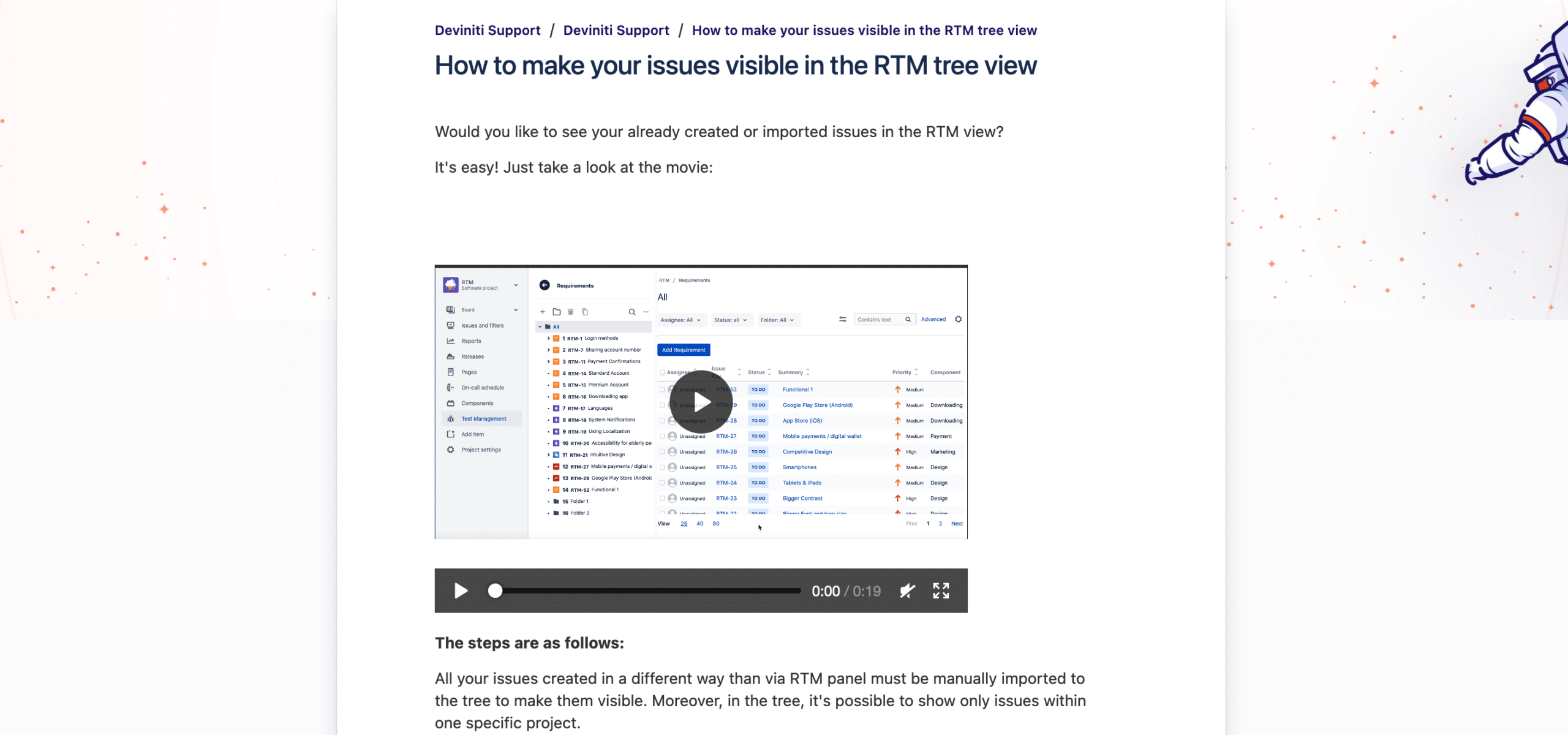Let’s talk to a robot – using chatbots as part of the support team

Originally published October 1, 2019, updated February 5, 2021
More than two-thirds of marketers say their companies compete mostly on the basis of customer service (according to Gartner). Organizations do what they can to make their support teams available and productive. That’s true for support directed at both internal and external clients who generally like to communicate their needs using their preferred methods. It’s best not to limit their freedom in doing so and offer a broad range of customer support options.
Many organizations use service desk platforms to provide accessible and seamless support to customers, internal departments, or even other companies. It’s a comprehensive solution, but some companies still choose to offer other contact options for reporting problems such as email, phone, or in-person reports. What are the advantages and flaws of both of these methods?
Why traditional forms of support (sometimes) fail
Which customer support channel is the most efficient? Now, email might seem like a good option. All the information is gathered in one place, and we can look them up when needed. This solution is still often applied in many organizations, but it happens to work only in cases of companies with a limited number of inquiries. Therefore, it isn’t a fully scalable solution, unless the company uses an efficient CRM system that collects all the email messages, as well as messages collected from other channels, in one place.
Now, one of the main advantages of this solution is the possibility to automate repetitive queries with predefined responses that accelerate the response time and give the team more space to work on more complex issues.
On the other hand, it presents a one-sided vision of the problem and comes in a non-standardized, imprecise form. It might take the support officer a lot of time to get all the problem details and start working on a solution.
Contrary to the disadvantages of this solution, email is more popular than ever before. Compared to 3.9 billion worldwide email users in 2019 (according to Statista 2021 survey), the number is expected to grow to 4.3 billion by 2023.
Phone
What about the phone? It may seem like the most universal channel – everyone has it and knows how to use it. In fact, this form of support can be helpful in the case of specific groups of customers – usually from the generation of Baby Boomers (born in the 1960s and 1970s). One of the strongest advantages of this channel? It’s simply easier and faster to present a problem verbally than in writing. It may save everyone’s – both customer’s and employee’s – time.
On the other hand, a third of internet users find voice/phone support the most annoying customer support channel. Younger generations prefer other ways to contact a company: through on-site customer service, social media, or live chat.
Phone customer service has yet another flaw: all centers are usually costly to maintain. Just consider this: you’ll have to hire a specialized support team that will be available on the phone during specific hours or even 24/7. Outside these hours, the customers are left on hold or need to find other ways to contact a customer support team.
Finally, reporting problems personally takes a lot of time and impacts the support agent’s ability to focus on a given task. Moreover, in-person meetings may negatively affect the standards of work in the ITIL methodology.
So, how should companies organize support?
There exists one solution that enables organizations to identify problems and offer solutions almost immediately. It’s called self-service, and modern technologies support it in many different ways.
For example, one way to offer that option by building a knowledge base available online, from anywhere, and at any time. You can create such a wiki on platforms like Atlassian’s Confluence. A knowledge base can contain step-by-step guides that help customers solve problems on their own, without having to wait in the phone queue or for a reply to their email. Is this what clients need? As Zendesk’s report confirms, yes – (53%) of consumers think it’s important for them to resolve their own product/service problems rather than rely on customer service employees.
In order to help customers find the answers to their commonly asked questions, our Deviniti customer support team has created a knowledge base for our clients. All questions are collected on one page and refer to the relevant articles and tutorials that allow customers to solve the issues on their own.
If you’d like to know more about Jira Service Management’s self-service options – take a look at this article.
But self-service isn’t the only option. Organizations looking for something more interactive have another medium to choose from: intelligent chatbots.
What if you allowed customers to have a conversation with the support team, but without having to get in touch with any of its members directly? That would mean substantial time savings for the team. And this is just one of the many benefits intelligent chatbots bring to customer service.
Intelligent chatbots
It would be difficult to compare live chat to other forms of customer service – in this case, customer satisfaction reaches 92%. And it’s hardly surprising.
Organizations that want to make the most of this technology usually implement the intelligent chatbot directly within a company messenger.
What does a chatbot do? It carries out a conversation with the person reporting a problem to learn as much about it as possible. On the basis of these details, it can suggest a how-to article on the company wiki that contains a solution or guidelines for the self-diagnosis of the problem. And what happens if the chatbot isn’t able to solve the problem this way? The chatbot can automatically create a request in Jira Service Management, categorize the problem reported by that person, and assign the request to a support officer. Chat for Jira Service Management is a live chat fully integrated with Jira Service Management. It allows chatting with the customers in real-time, turning conversations into tickets and comments in Jira, integrating the chat with the knowledge base, and more.
For more information about Communication via Chat for Jira Service Management, take a look at this article.
The idea here is that the chatbot is enriched with artificial intelligence so that its capabilities increase over time. For example, its questions will be more precise and solutions more relevant. Software developers can take advantage of tools such as the Microsoft Bot Framework to develop such bots faster.
Many chatbot solutions are still quite simplistic and make submitting issues ineffective since they frequently force customers to choose an alternative form of contact. However, several companies have managed to choose the right solution and make chatbots work for them, thanks to artificial intelligence and other innovative approaches. One of these solutions is Freshchat from Freshdesk, automated with bots and AI. The tool can be integrated with lots of products, including Facebook Messenger, WhatsApp, and Apple Business Chat.
Companies using chatbots
Here are 6 examples of companies that benefit from chatbot integrations in many different ways. Read to find out how they use chatbots, what type of assistance bots provide to customers, and lessons learned about chatbot implementation.
1. Freshworks
The already mentioned Freshchat made by Freshworks is a comprehensive solution that allows companies to use both the benefits of bots and helps customer support employees to automate and speed up their work. Advanced automation is integrated with the CRM system which collects the entire conversation history with a given client in one place. This allows agents to diagnose their problems faster and propose the best possible solution.
2. Delivery Hero
Delivery Hero, the world’s leading local delivery platform, has decided to use Freshchtat in its internal communication between delivery riders and support agents. The main Freshchat advantage was the ability to conduct messages without having to switch between different applications (one for chatting and another for processing orders). Thanks to integrating Freshchat with the company’s app, now assignments and chat distribution are fully automated. This way agents can effectively handle over 7 million chats per month.
3. Nextiva’s chatbot
Nextiva’s bot was designed to be multifunctional, supporting the company in areas ranging from customer service to sales. Moreover, the bot can connect customers to a human rep in a few moments. The company has an extensive support team that counts over 400 team members, and the bot serves as a forwarding service that helps to categorize queries and gain initial information from customers.
4. Paychex Flex Assistant
Paychex introduced a chatbot to boost the experience for their clients and their employees who use the company’s application Paychex Flex®. The company initially built the bot to answer the most frequently asked questions of their front-line service providers who interact with thousands of customers every day. Flex Assistant can answer over 100 questions that cover topics such as account maintenance, payroll, time and attendance, retirement, benefits, and more. If the bot fails to answer a question in two attempts, it connects the user to a live agent in real-time.
5. KLR International Realty
Chatbots can come in handy in the real estate sector too. KLR International Realty is using a bot that creates questionnaires and offers live event announcements or reminders. The chatbot questionnaire gathers basic information about the needs of a new client. The customers answer a series of questions that require simple answers to give the company’s sales reps an idea about what they’re looking for.
6. Vacation planning bot at ScienceSoft
ScienceSoft has developed a chatbot for vacation planning in the company’s SharePoint intranet. The bot was trained to support conversations in natural language. Employees can ask the bot to show or delete their planned vacations, book a new vacation, or show the number of available vacation days. The chatbot is integrated with two messengers employees use, Skype and Telegram. That’s how they can reach the bot from outside the intranet.
The future is live chat
Chatbots are becoming a new standard in customer service as an increasing number of organizations turn to this innovative technology. They help companies to build relationships with customers and support employees in getting things done faster. Now, the support agent is able to hold multiple conversations at once, and integrating with bots means that they no longer have to answer the same simple questions multiple times.
Would you like to integrate a chatbot with the service desk platform? Read more about the Freshworks tools or get in touch with us to discuss what we can achieve together! We help companies use the latest technologies to their benefit in customer service and other areas.
Read more:






